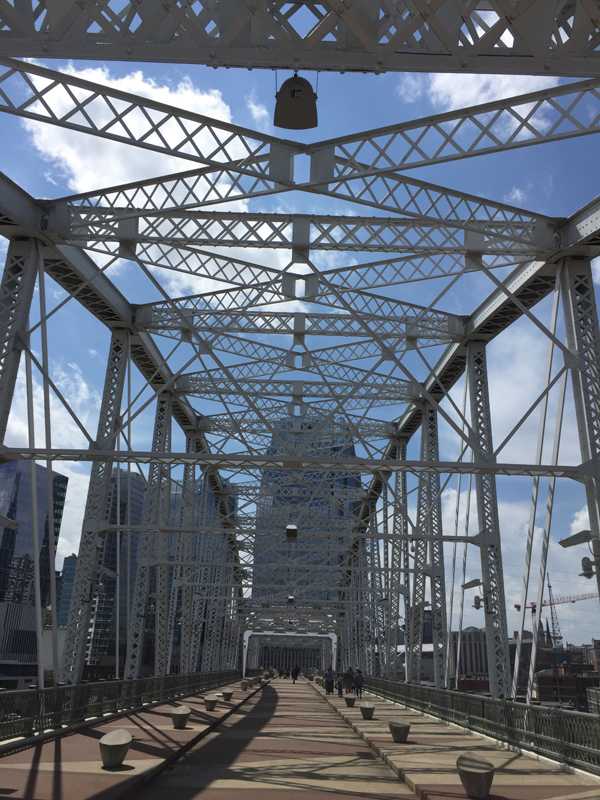Community reinforces Nashville music experience
- Details

Expanding the definition of what is considered songwriting in music city, interactive music composer Aaron Hoke Doenges uses Nashville area rivers and the movement of people to compose constantly evolving and interactive music. Shifting notes and volumes are created in the work using the waters’ changing depths and speeds. To achieve this, Doenges downloads live data about local rivers from the United States Geological Survey website and translates the information into music.
The music moves to reflect the changes in the waters’ flow as the online data is updated. Data from the USGS sensors in the Cumberland River, the Harpeth River and Richland Creek is used for the installation. At the same time, when people move across the bridge, these musical elements are altered to reflect the impact the people of Nashville have on local waterways. The more the audience moves on the bridge, the greater the changes in the music.
The sound system for the project was designed by Bob Nickerson, production consultant at Corner Audio & Video (a division of Corner Music, Inc.).
Nickerson says: “There was never any thought other than to use Community loudspeakers for this project. Our experience with them in many demanding outdoor projects made them the obvious choice.” The loudspeakers were installed by David Goon, chief systems integrator, and Harley Wheeler, lead installer of Corner Audio & Video.
Nickerson used eight compact R.35-3896 8-inch horn-loaded triaxial three-way loudspeakers to create four stereo zones. Each zone is monitored by an IP camera that allows motion activation to add musical elements to the score, derived from USGS sensor data, as people move from zone to zone.
“The fidelity and coverage of the R.35’s is spectacular,” comments Nickerson. “The entirety of each zone is filled from side to side and end to end with no hot or cold spots. The effect realized is that you are enveloped in the music just like you would be by the water if you were swimming in the river.”
(Jim Evans)













